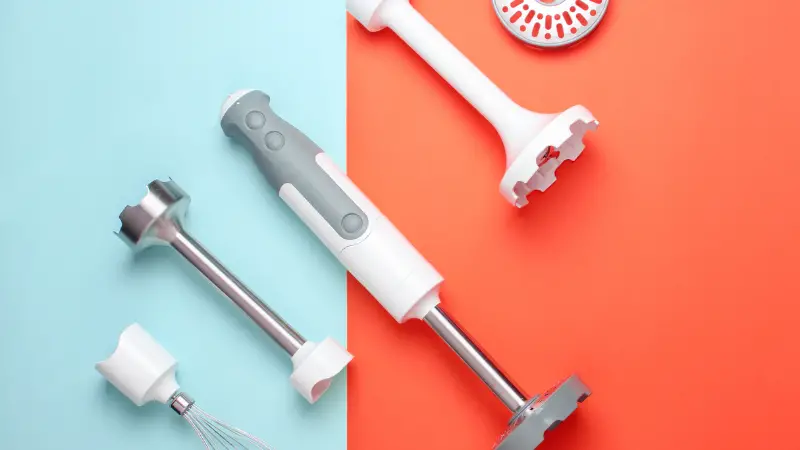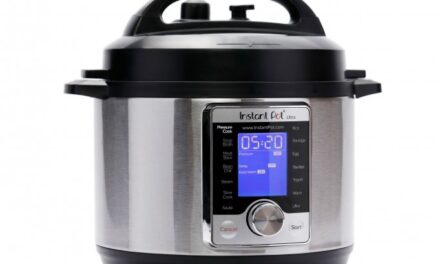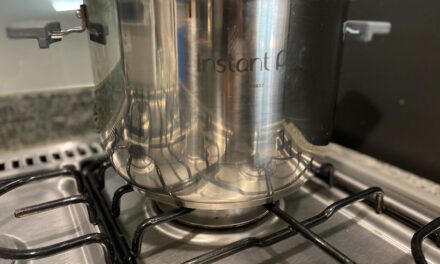You’ve just finished cooking and simmering all the ingredients you need for your favorite soup. Now, all that’s left to do is blend it into a smooth, rich consistency. But is it safe or smart to use a hand blender in hot soup?
You can use a hand blender to purée hot soup, but you will want to take precautions for the sake of your safety, the cleanliness of your surroundings, and the integrity of your tools. While this process is usually safe, there are risks involved with using a hand blender with any hot food item.
In this article, we will discuss some potential hazards of using a hand blender in hot soup and what you can do to prevent them. Implementing these the next time you need to blend a soup should ensure that the process is as safe and effortless as possible.
Risks of Using a Hand Blender in Hot Soup
When used properly and in the right conditions, you shouldn’t have any issue using a hand blender to puree soup, regardless of its temperature.
That being said, when hot food and cookware are involved, it’s important to know the risks associated with them and what precautions to take.
The most common risks of using a hand blender in hot soup include the following:
- Burns
- Overheating the hand blender’s motor
- Damage or destruction of kitchenware
We’ve elaborated on each of these risks below and provided tips on how to avoid them.
Of course, the simplest option would be to let your soup cool to a safe temperature or completely before you start blending. But, if that isn’t an option, you’ll want to use the precautions we discuss here.
Burns
The most important risk to be aware of when using a hand blender in a hot soup is the potential for burns.
By “hot,” we assume your soup is boiling, simmering, or somewhere in that temperature range. Boiling occurs at 212 degrees, and simmering is usually held around 180 to 190 degrees.
Human skin can experience burn damage from temperatures as low as 109.4 Fahrenheit (44 degrees Celsius).
Therefore, even if a small amount of your boiling soup splashes onto you, it could do some noticeable damage and cause immediate pain, even though it will cool significantly once it is out of the pot.
The worst-case scenario would be that your hot soup splatters out of the bowl and onto you in large quantities.
This, paired with delayed removal, could easily result in first or second-degree burns.
To avoid this, ensure that your hand blender is completely submerged in your hot soup and only blend in a deep bowl with several inches of space between the soup and the bowl’s lip.
If you experience some degree of burn or scalding when blending your hot soup, immediately step away from what you’re doing, carefully wipe off the soup, and then cool the burn using cool or lukewarm water for 20 minutes (do not use ice, iced water, or creams/greasy substances).
You can then moderate the pain and reduce swelling with over-the-counter pain relievers (ex., Ibuprofen).
Overheating the Hand Blender’s Motor
Hand blenders are typically made with high-quality, durable materials, such as stainless steel, that allow them to handle tough kitchen conditions without issue.
However, when these tools are used for extended periods or are exposed to extreme temperatures, the integrity of their interior components may be compromised.
The most likely outcome in this scenario is that the extreme heat radiating from your soup, combined with the heat your hand blender generates while operating, causes the tool to overheat.
This could wear down or permanently damage its interior motor and other parts.
Before placing your hand blender in your hot soup, check its user manual for the temperature range that its manufacturing company recommends for use.
While some hand blenders are made with materials that can withstand high temperatures, this is not always the case.
It is also wise to limit how long your hand blender is immersed in hot soup to reduce the risk of its temperature reaching dangerous levels.
Damage or Destruction of Kitchenware
It’s always important to consider the kitchenware you will use for a task and how the materials they’re made of can affect their efficiency.
When people are using hand blenders, they are frequently immersing them in a large metal pot or maybe even a Dutch oven.
As long as the blender doesn’t contact the sides of these items, there shouldn’t be any concerns.
However, the risks associated with using a hand blender in hot soup increase when this task is performed in a glass or plastic bowl.
Most plastics won’t melt until they reach temperatures ranging from 300 to 550 degrees Fahrenheit, but this could be significantly lower for thinner bowls made of cheap plastics.
If your hand blender is made with metal parts, it can scratch and damage delicate kitchenware such as glass bowls and casseroles if not used properly.
To avoid this, make sure the protective guard or shield of your tool is always in place while blending.
The risk associated with glass is that you could potentially cause the bowl to shatter if you pour extremely hot soup into a cold glass bowl.
To avoid these issues, we recommend only using a hand blender in metal, cast iron, or ceramic bowls.
Final Thoughts
To reiterate, it is overtly safe to use a hand blender in hot soups, even if the soup is boiling. If you are using the tool properly and for brief periods, you shouldn’t experience any issues.
That being said, it is important to keep the risks mentioned here in mind and implement the precautions we’ve discussed to keep you, your kitchen, and your delicious soup safe.





